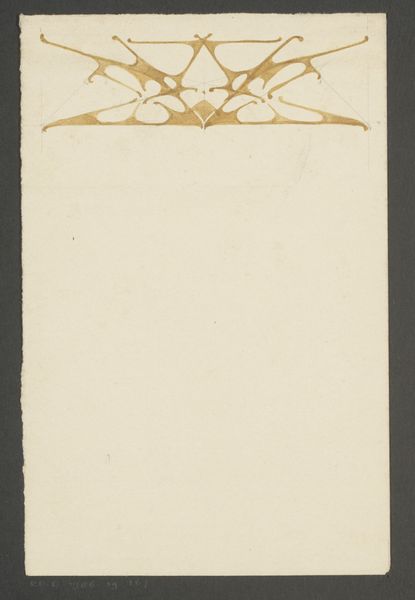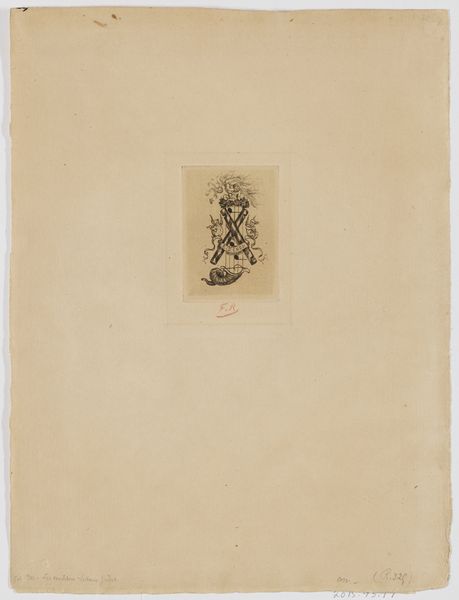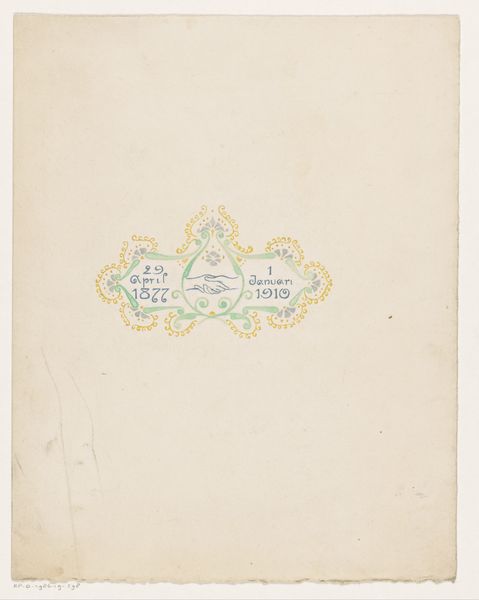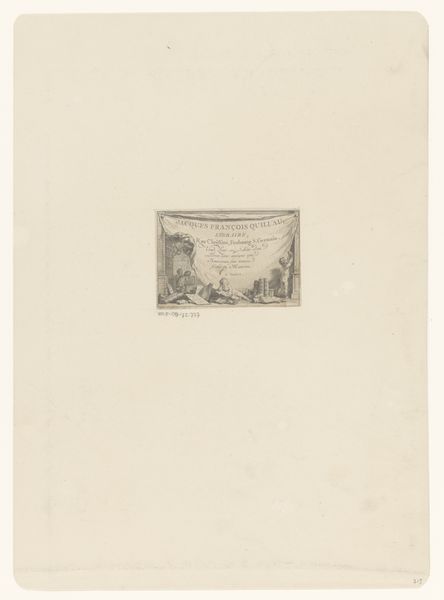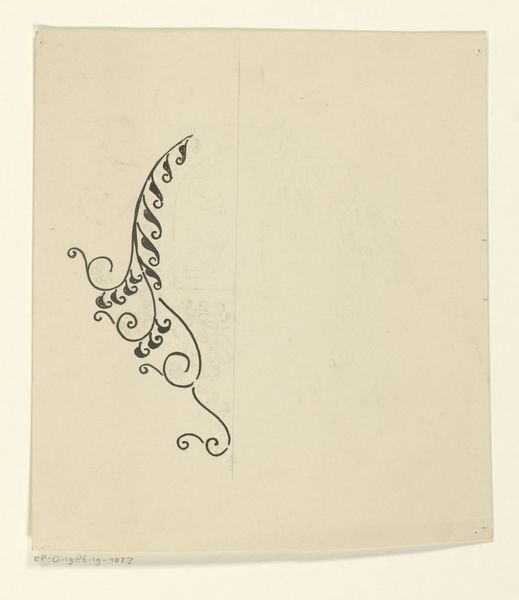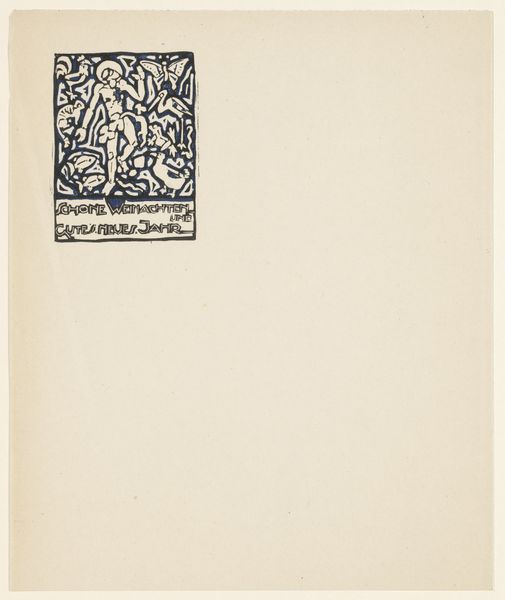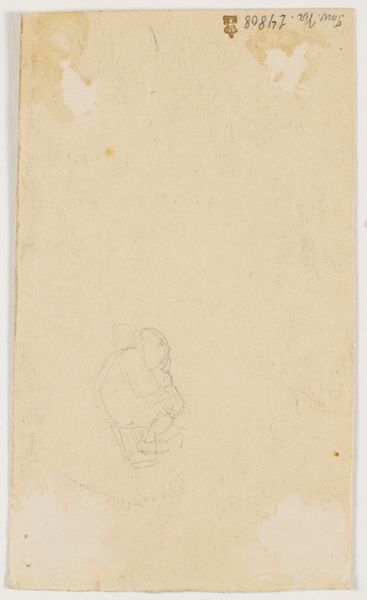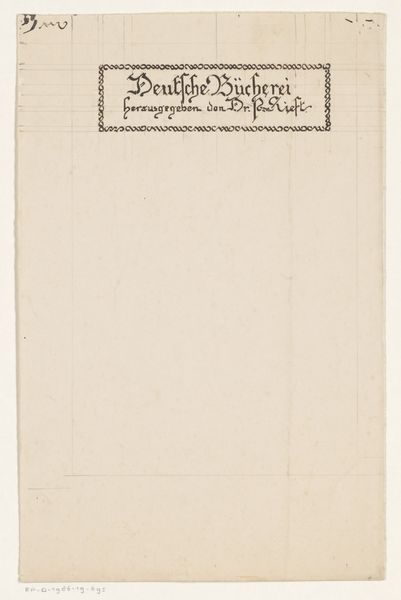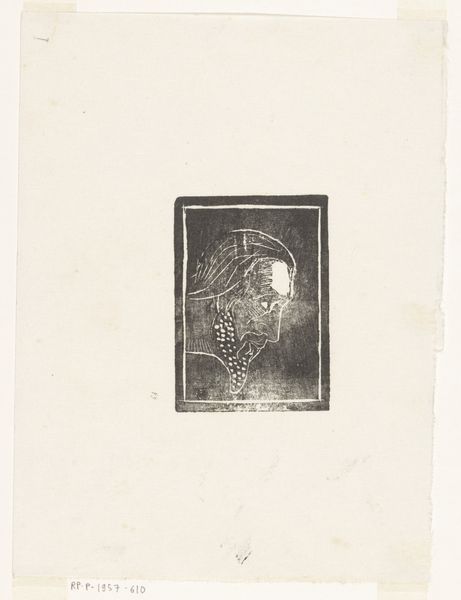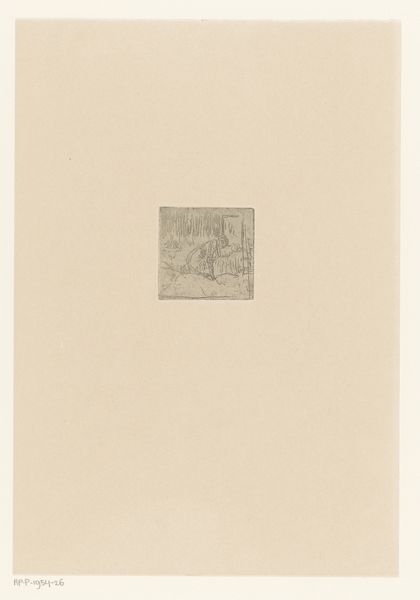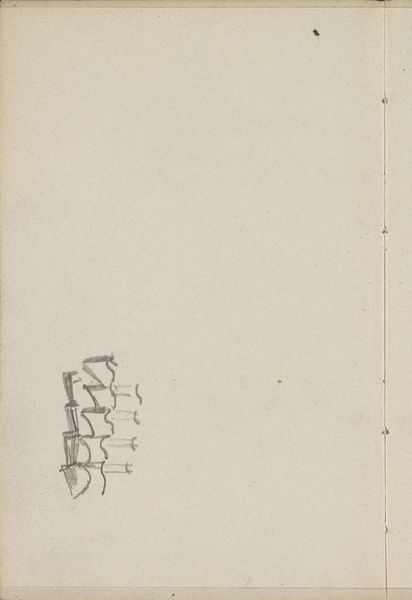
Briefpapier van het Rijksinstituut tot Opleiding van Tekenleraren te Amsterdam c. 1923 - 1970
0:00
0:00
Dimensions: height 214 mm, width 135 mm
Copyright: Rijks Museum: Open Domain
Curator: This is a letterhead from the Rijksinstituut tot Opleiding van Tekenleraren te Amsterdam—that's the National Institute for the Education of Drawing Teachers in Amsterdam. It likely dates from sometime between 1923 and 1970. Editor: My first impression is how delicate and refined it is! There’s a ghostly quality to the white paper, and the emblem's elegant lines whisper of tradition. The texture of the paper itself seems to demand a particular kind of respect. Curator: Yes, the Pegasus is a striking image, isn't it? Think of Pegasus: in classical mythology it often signifies wisdom and poetic inspiration, ascending to intellectual heights. A fitting symbol for an educational institution! It certainly lends an air of gravitas. Editor: Indeed. And the fact that it’s a printed letterhead really intrigues me. These materials—ink and paper—speak volumes about the infrastructure and values underpinning art education at the time. Who designed the printing plate? What was the cost per sheet? Was it produced locally, perhaps providing income to artists? Curator: I appreciate you bringing it down to earth like that. The Pegasus almost floats in its golden space. Considering the timeframe, post-Art Nouveau into the mid-20th century, one sees a yearning for the ornate beauty, tamed, sobered almost by geometric sensibilities taking root in design. Editor: Precisely. The stylized wings and swirling vegetation are beautifully restrained, hinting at both tradition and emerging industrial aesthetics. This institutional object showcases a moment when mass production began influencing visual arts. Even learning institutions engaged with print as an act of standardization. Curator: So, you're saying that even a humble piece of stationery reflects evolving social relationships mediated by industrial production, that is no less moving as artistic symbol. Editor: Absolutely. Looking again, it reminds me that our everyday material world often silently echoes back dominant culture and the material underpinnings of learning. Curator: I will certainly view commonplace, printed, materials more intently moving forward.
Comments
No comments
Be the first to comment and join the conversation on the ultimate creative platform.
